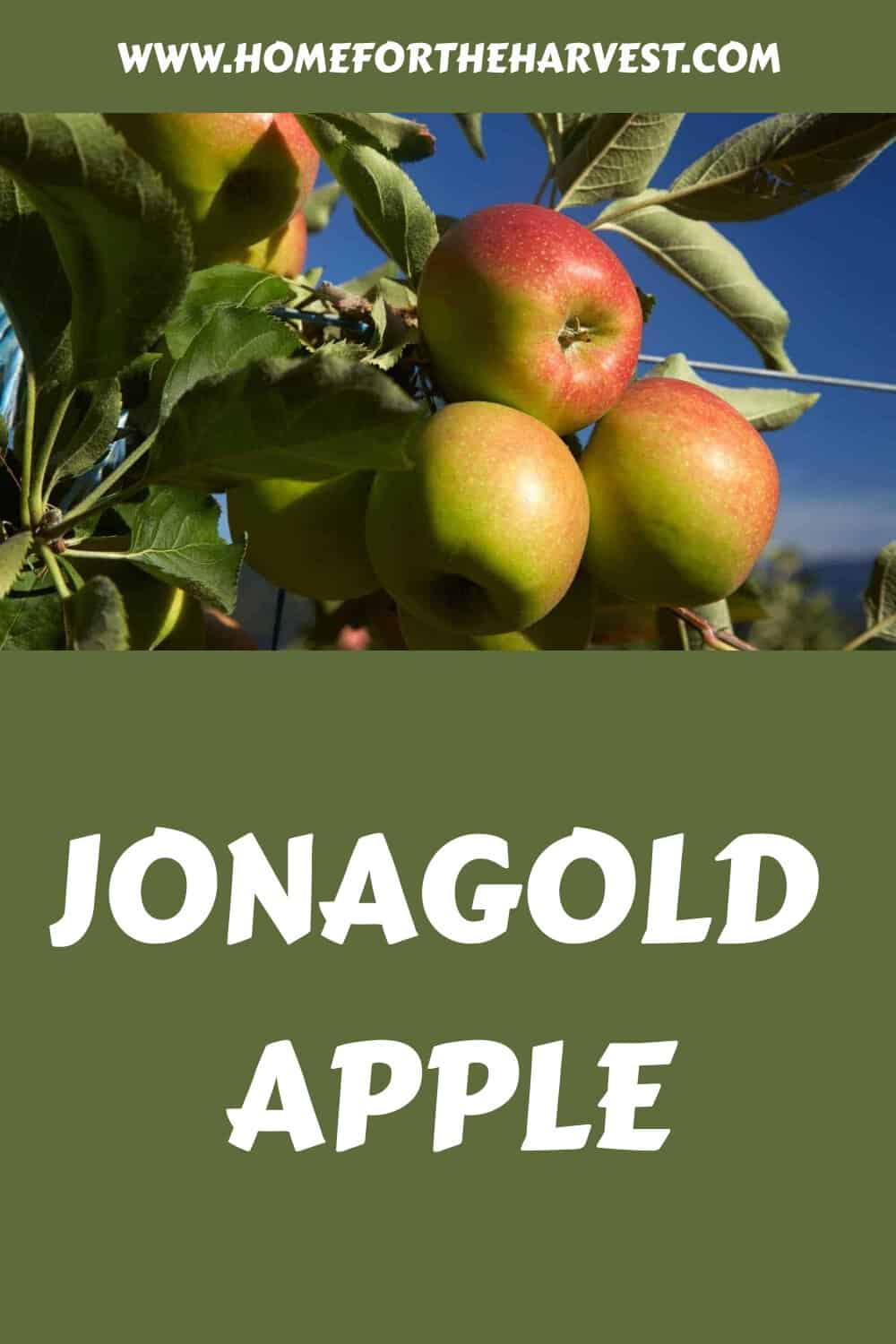Jonagold apple is an American heritage apple cultivar known for its large size, delicate skin, and balanced sweet-tart flavor. These apples have a juicy, crisp texture that’s perfect for eating fresh or for baking. The bicolor peel has a green-gold background color with a crimson-red blush. The Jonagold apple was bred at the New York State Agricultural Experiment Station of Cornell University (Geneva, NY) and introduced in 1953.
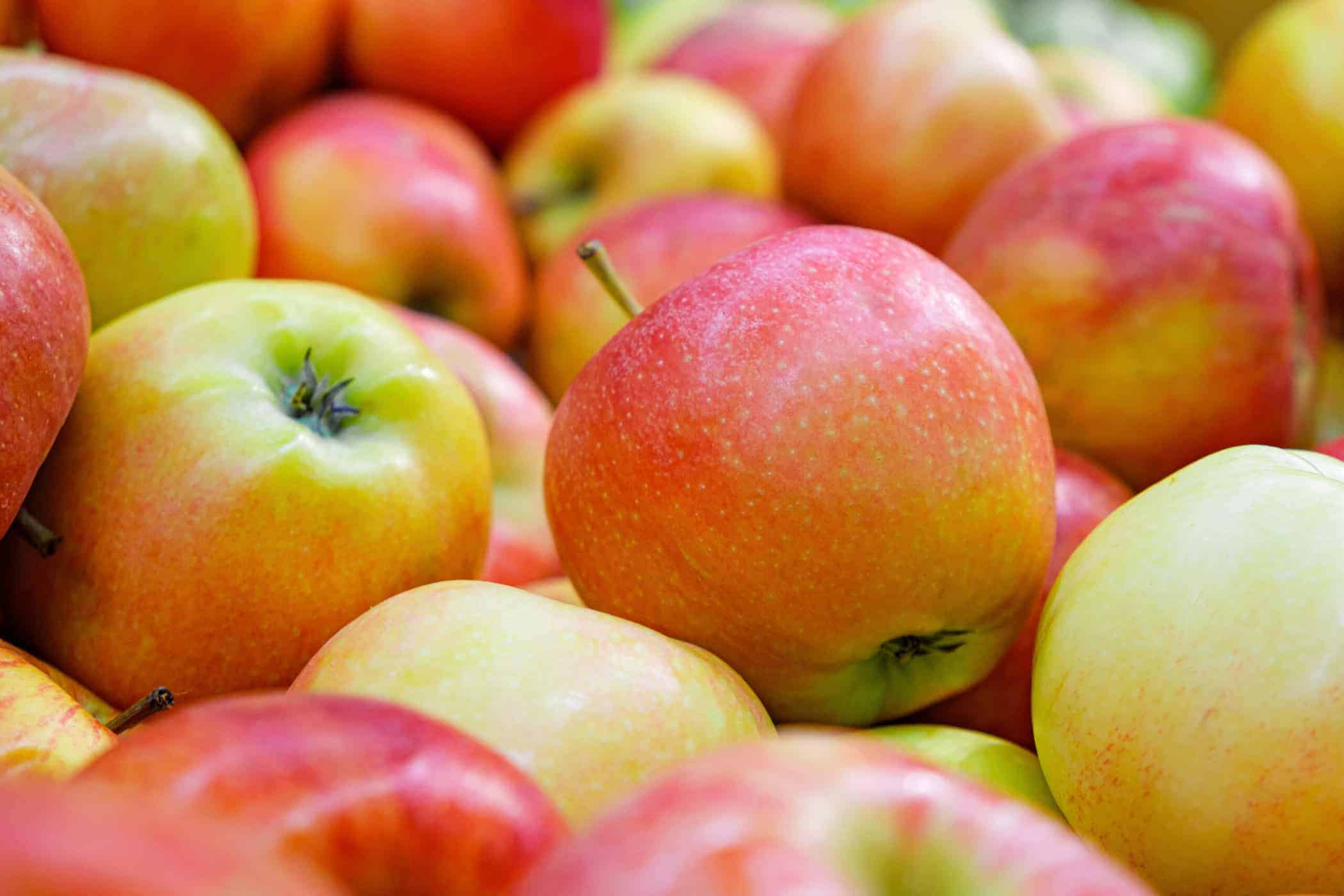
Jonagold apple basics
The Jonagold apple is a cultivar bred to highlight the best characteristics of both the Golden Delicious apple and the Jonathan apple. The Golden Delicious apple gives the Jonagold its honey-like sweetness and creamy texture. The Johnathan apple lends its tart flavor and crispy exterior to the Jonagold. This combination makes the Jonagold a delicious and well-balanced apple.
This apple was first developed in the New York State Agricultural Experiment Station at Cornell University, which produced many delicious apples, including Cortland, Macoun, and Empire. It has since been distributed to more countries than just the United States and it is particularly popular in Europe (especially Belgium).
Jonagold apple trees are one example of a triploid apple cultivar. Triploid apple trees have three sets of chromosomes (instead of the regular two sets), have sterile pollen, and tend to grow large crops of big apples. Other examples of triploid apples include Gravenstein and Mutsu (Crispin).
Because they have sterile pollen, Jonagold trees cannot pollinate other apple trees. They are also not self-fertile and require nearby pollinator trees. Jonagold trees can be pollinated by one other nearby self-fertile apple variety, or by two other nearby varieties that blossom at similar times and can cross-pollinate each other, as well as the Jonagold tree.
“Michael Pollan calls this graduate of Cornell University “one of the great achievements of modern apple breeding,” and I can think of no other product of the breeding programs that so successfully combines the good traits of both parents. Jonagold takes Jonathan’s cheerful bright redness and lays it over GOlden Delicious’s womanly roundness.”
Apples of Uncommon Character: Heirlooms, Modern Classics, and Little-Known Wonders, by Rowan Jacobsen
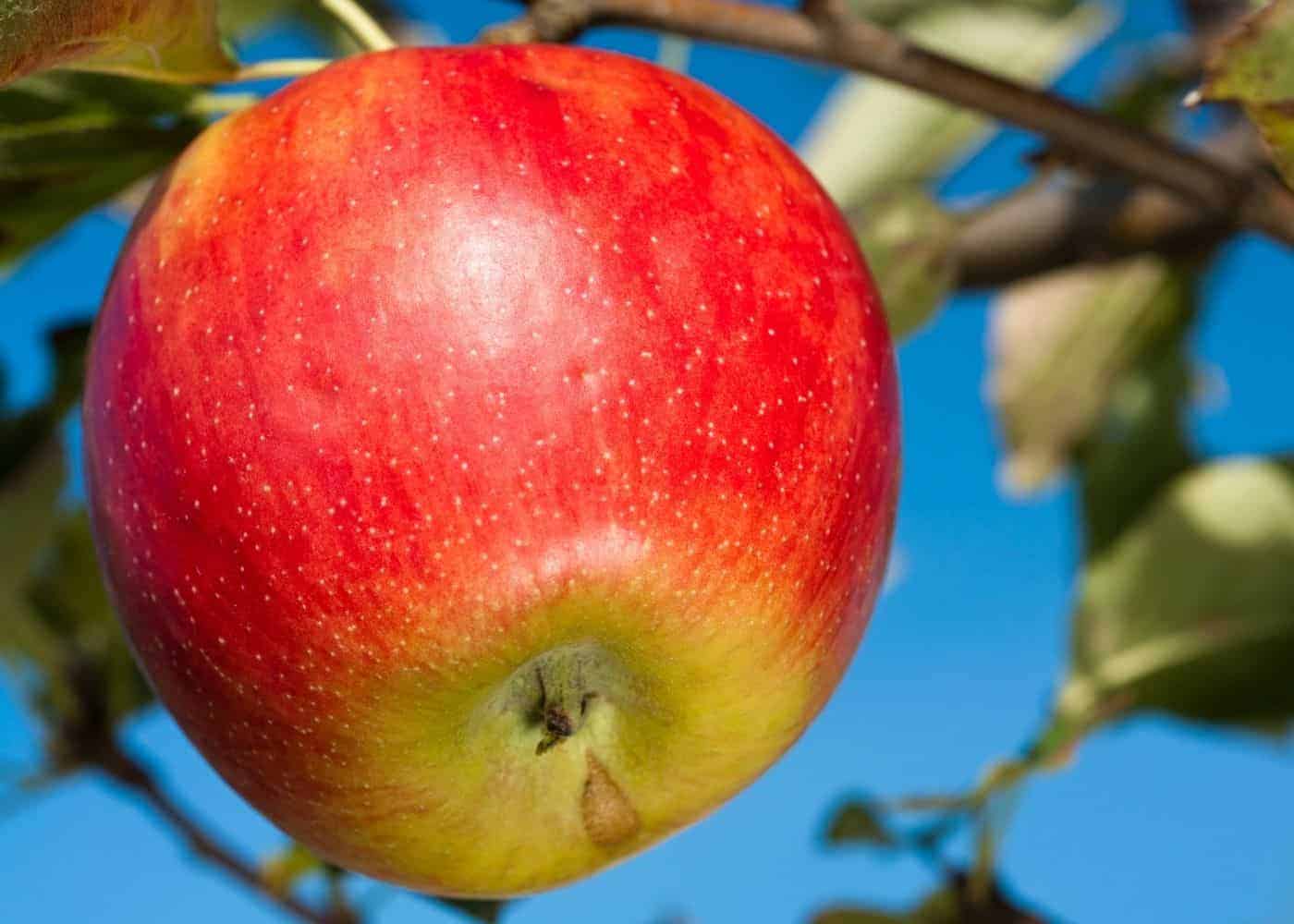
Apple appearance
Jonagold apples have a background color similar to their Golden Delicious parent, with a green-yellow-gold tone. The peel has a red blush, likely from its Jonathan Apple parent.
Jonagold apples are quite large, which makes them highly coveted by commercial sellers. They get more bang for their buck, and so do you! While most apples have a lot of red in their skin, Jonagold apples are more of a blend of greenish yellows to rosy oranges. The temperature they are grown in affects the coloring, and they often have red spotting or vertical stripping on their skin.
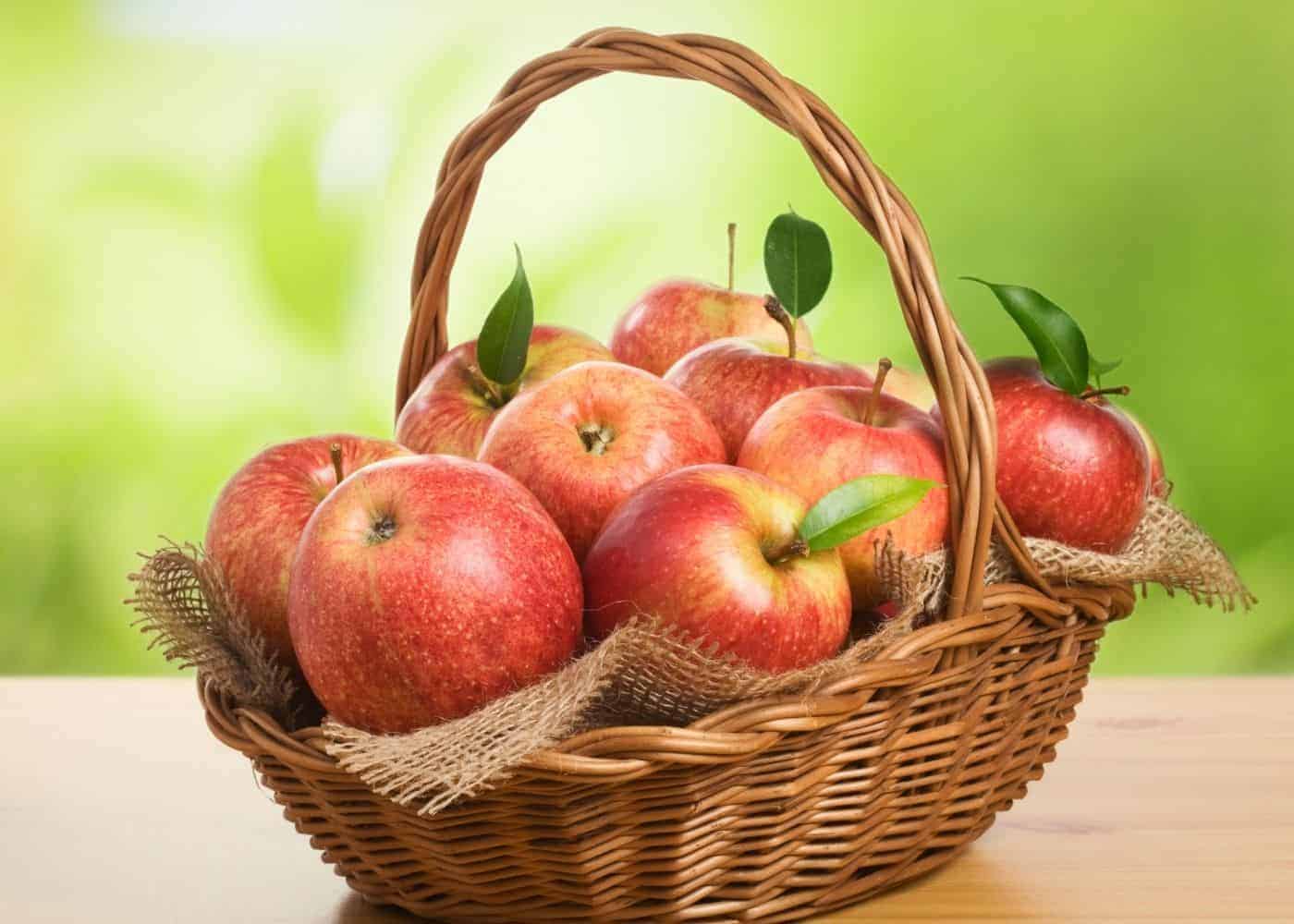
Flavor profile
Jonagold apples have a sweet flavor with a little bit of tartness (likely from its parent apple, the Jonathan Apple). These are creamy yet crisp apples, which makes them very enjoyable to bite into. The texture of the flesh inside is incredibly juicy, with a fluffy yet crunch-fresh texture.
The flavor of a Jonagold is a perfect balance of its parent apples and a perfect snack for any fruit lover. The flavor of a Jonagold Apple is very enjoyable on its own as well as in cooked recipes (especially apple pies). These apples aren’t overly sweet and are quite refreshing.
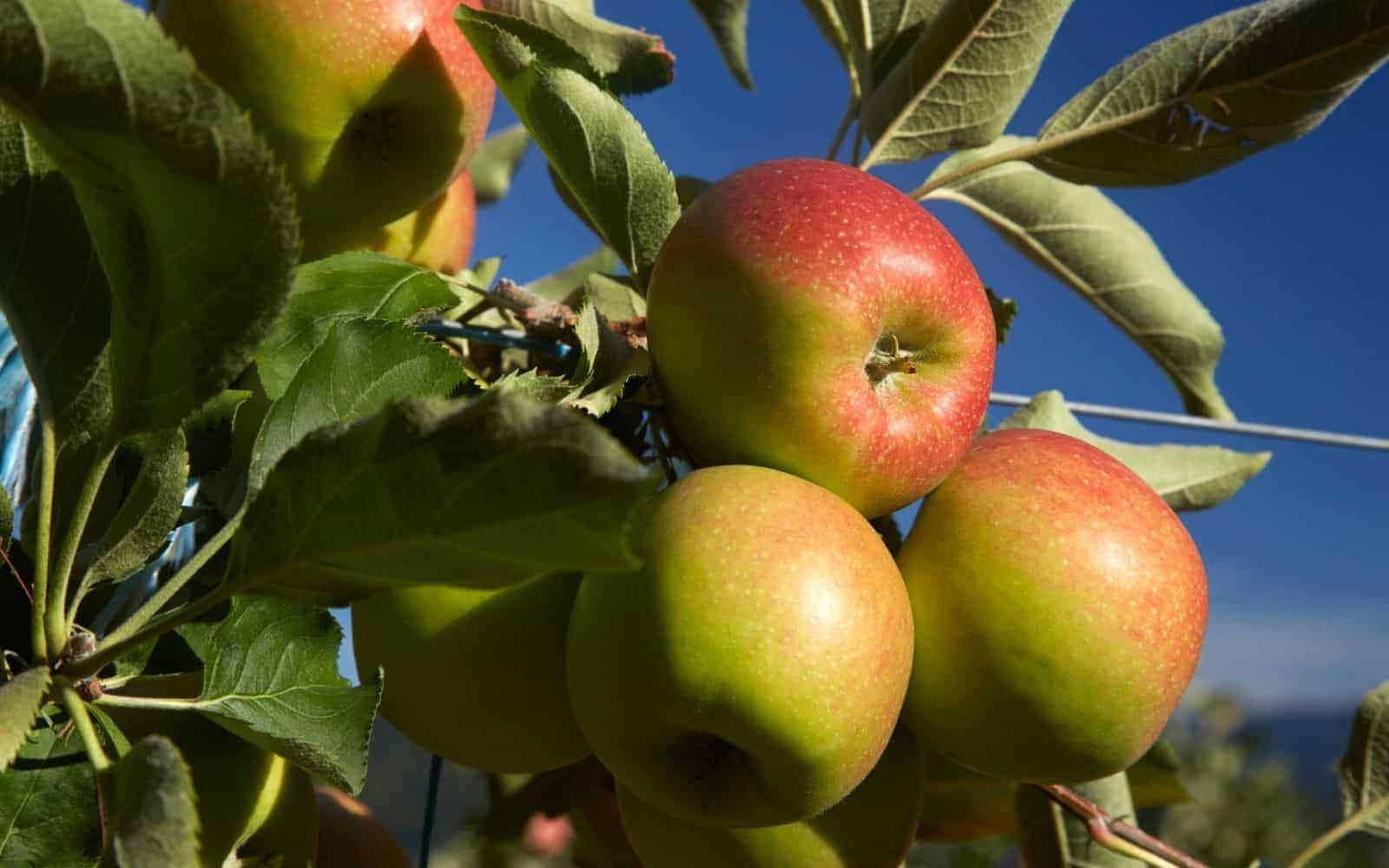
Growing Jonagold apples
If you buy a Jonagold apple tree, plant it in a wide area of well-drained soil. Make sure it is in partial to full sunlight when first planting it. Dig a hole twice the width of the root ball but no deeper. Place the tree in the hole and make sure it is vertical before loosening the root ball and filling in the spaces with the original soil. If you are going to plant more than one Jonagold tree, give at least 10-12 feet of space between them.
Jonagold apple trees are sterile by themselves and need the pollen from another tree (or trees) to reproduce. This can make them more difficult to find and grow, but it can be done with proper pollination trees. They need to be grown near a different variety that is self-fertile, or nearby two other varieties that can cross-pollinate. The timing of blossom opening is key when choosing apple pollinator trees. Here are some apple types that can work as pollinator trees for Jonagold:
- Granny Smith apple (self-fertile)
- Gala apple
- Cortland apple
- Fuji apple
- Empire apple
- Golden Delicious apple
Jonagold apple trees bloom mid-season. After blooming, take care to watch for powdery mildew development on the leaves or apple scabs on the fruits. Sunburn may occur during heat waves especially if the tree is not irrigated.
“Jonagold has garnered worldwide attention for its broad market appeal. Orchardists appreciate the variety’s tendency to bear crops on dwarf stock just three or four years after planting. It is a good choice for backyard growers, ripening unevenly over two to three weeks and generally necessitating several pickings.”
Apples of North America: Exceptional Varieties for Gardeners, Growers, and Cooks Hardcover, by Tom Burford
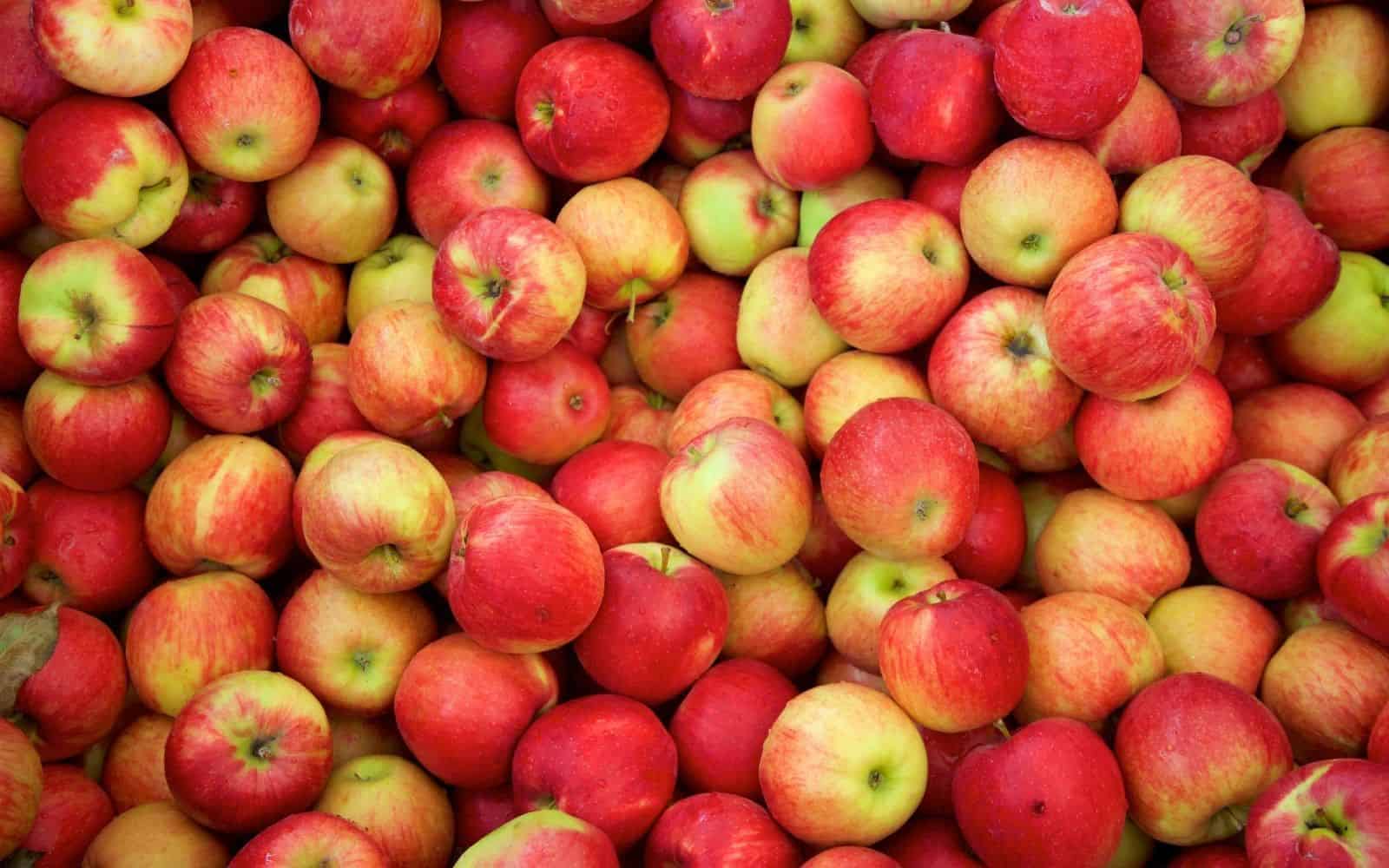
Purchasing Jonagold apples
Jonagold Apples cost around $1.20-$1.50 USD each. If you buy them in bulk they are typically cheaper. They are slightly more expensive than other apples, but if you have the budget for them, get them!
Jonagolds are a great apple to add to your grocery list and they are not too expensive either. Jonagold apples are larger than other apples, so buying them by the pound might seem a bit pricey sometimes, but overall you are getting a lot of fruit for the price.
These apples are grown in various places around the globe, but not in a well-balanced ratio of northern and southern hemispheres, so they are not really available year-round. Despite this, Jonagolds are still incredibly popular in many countries and they are available from mid-September through early spring.
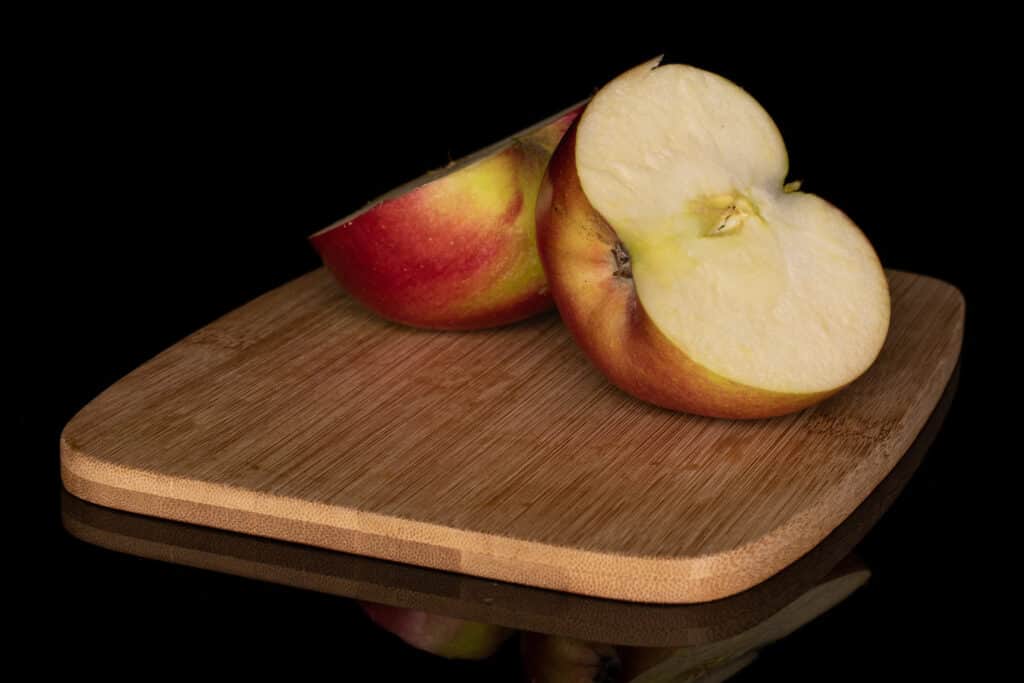
Storing Jonagolds
These apples can be stored for a long time. Right off the tree, they can store for up to 8 months in a refrigerator. While that is a long time and can be super nice when you don’t want to eat them right away, they do taste much better within 2-4 months after harvesting them. As long as you keep them in your refrigerator, Jonagold apples are not very likely to go bad in the first few weeks after you buy them.
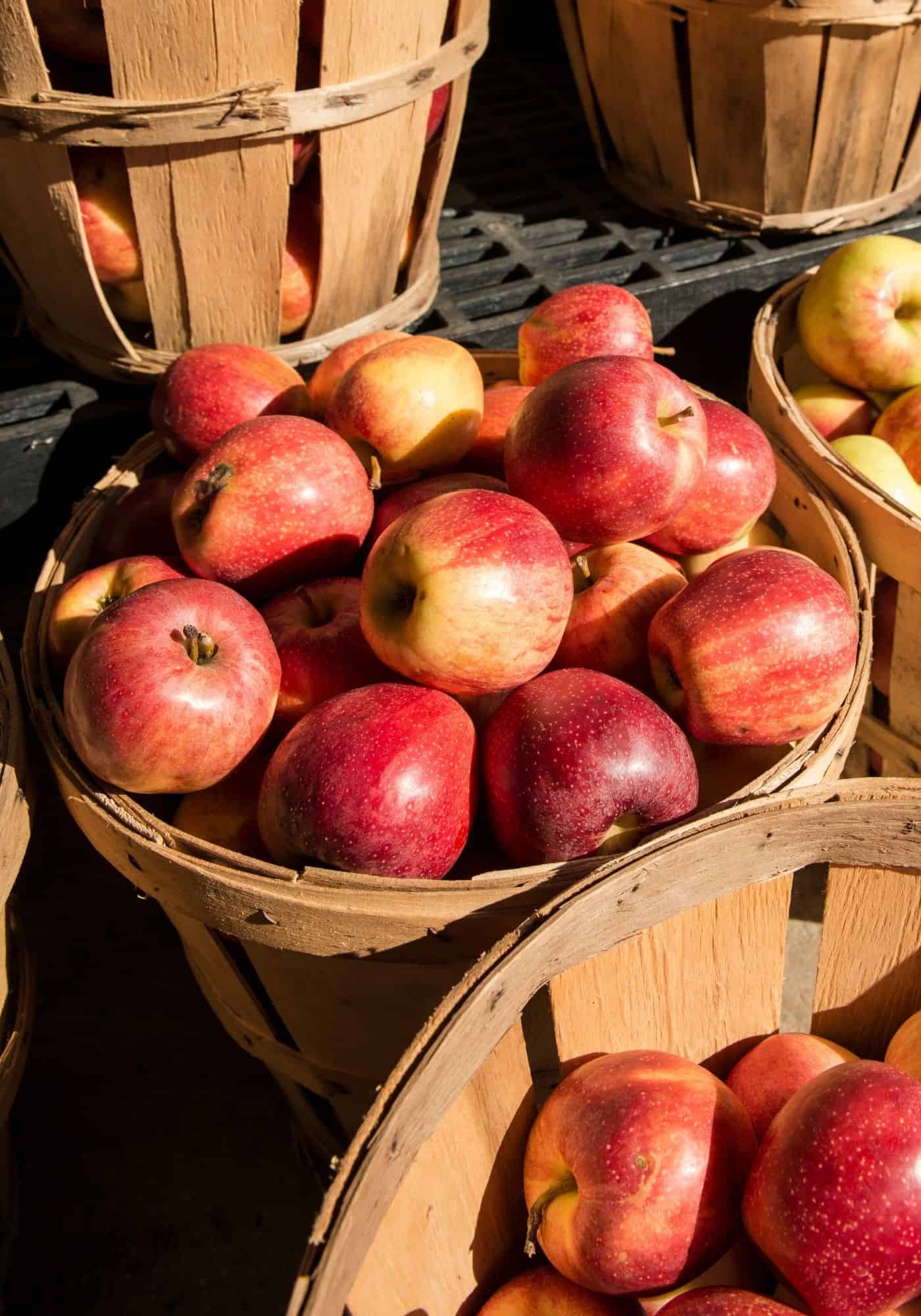
Because of their perfect balance of sweetness and just a little tartness, Jonagold apples are perfect for all sorts of baked treats. They have a firmer composition and a bold flavor so they hold up in the oven well and give off a pleasant, honey aroma when baked. Use them in apple pies, tarts, crisps, and any other pastry or dessert you can think of. They make for especially delicious fried apples. Fry them up with a little bit of butter in a pan and coat them in cinnamon for a tasty treat!
Jonagolds are also very capable of making savory dishes a bit sweeter and they add a nice crunch. Try adding them to a charcuterie board or a sandwich with rich cheeses. They will help balance the fattiness of the cheese and freshen up the whole dish. Jonagolds are also very tasty and enjoyable all on their own and while they can be used in all sorts of recipes, they make a great snack straight out of the fridge.


